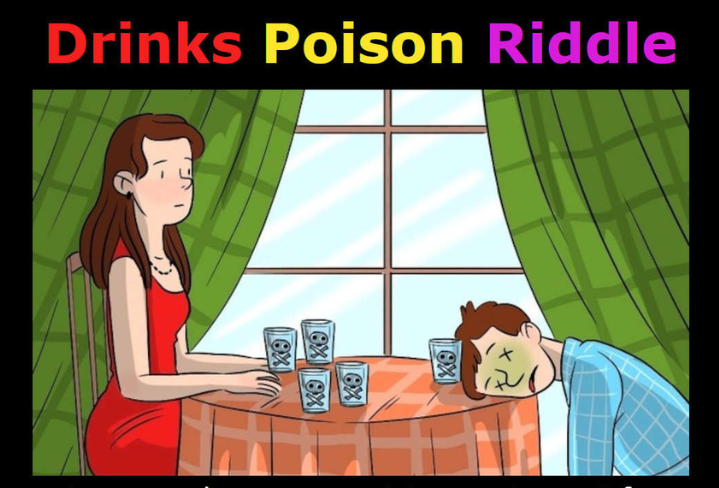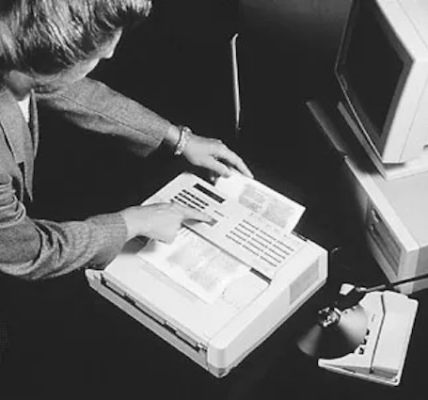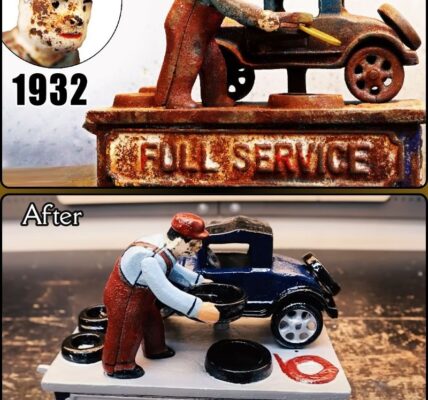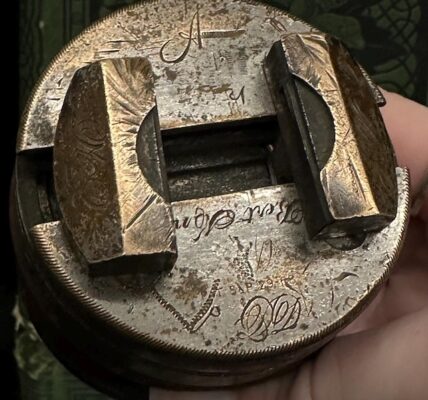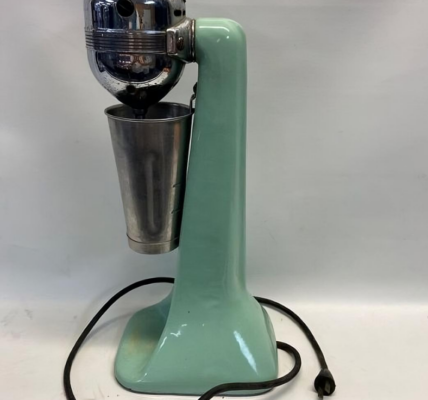Imagine this: a man and a woman sit down at a restaurant, ready to enjoy a casual dinner. The woman orders five icy drinks, while the man opts for just one. In a strange twist of fate, the woman drinks four of the five glasses and survives, while the man, who only sips one drink, tragically dies. The doctors later reveal that all the drinks were poisoned, leaving everyone puzzled. How could she survive while he perished?
This brain-teasing scenario is known as the “Drinks Poison Riddle,” and the answer lies in a seemingly harmless element of the drinks—the ice. Let’s dive into this riddle, unravel its mysteries, and explore the unexpected lessons it holds about critical thinking and attention to detail.
The Setup of the Drinks Poison Riddle

At first glance, the situation seems straightforward. Two people share a meal, order drinks, and somehow, only one of them falls victim to poison. The initial assumption might be that the man’s drink was poisoned, while the woman’s drinks were safe. However, the doctors confirm that all drinks contained poison, sparking a deeper mystery. This riddle challenges our perception and prompts us to think beyond the obvious.
The key to solving this riddle lies in the ice cubes used in the drinks. The poison was not mixed into the liquid but rather hidden in the frozen ice. This detail provides a fascinating twist and ultimately explains why the woman survived while the man did not.
The Ice Cube Twist: A Critical Clue
How the Woman Survived
The woman consumed four drinks quickly, giving the poison-laden ice little time to melt. As a result, the toxic substance remained trapped in the ice cubes, never fully dissolving into her drinks. By drinking the beverages rapidly, she bypassed the poison, allowing her to enjoy her drinks without any harmful effects.
Why the Man Perished
On the other hand, the man sipped his drink more slowly, allowing the ice to melt and release the poison into the liquid. Over time, the toxic substance blended into the drink, and he unknowingly ingested it, leading to his untimely demise. His slower pace allowed the danger hidden in the ice to reveal itself, while the woman’s quick drinking spared her from the same fate.
This chilling twist underscores the importance of seemingly minor details. The poison was present in all the drinks, yet the timing of its release determined who lived and who died.
The Broader Lessons Hidden in the Riddle
The Importance of Caution and Awareness

The man and woman in the riddle made choices based on their awareness (or lack thereof) of the danger in their drinks. In life, we frequently encounter situations where the dangers aren’t immediately apparent. By cultivating a habit of awareness and caution, we can better protect ourselves from unforeseen risks.
This riddle illustrates how critical it is to consider not only what we know but also what we don’t know. Just as the poison remained hidden until the ice melted, certain risks may not become visible until it’s too late. By staying alert and proactive, we can often mitigate potential dangers before they escalate.
Applying Lateral Thinking in Everyday Life
The riddle also reminds us of the importance of lateral thinking in tackling real-life challenges. Whether you’re dealing with a complex project at work or a tricky personal dilemma, thinking outside the box can open up new solutions. Like the woman who drank quickly and avoided the melted poison, a fresh perspective can often reveal alternative paths to success.
Conclusion: The Subtle Art of Looking Deeper
The “Drinks Poison Riddle” serves as a powerful reminder to look beyond the obvious, to think creatively, and to value the details. By questioning assumptions and embracing lateral thinking, we can uncover hidden truths that might otherwise go unnoticed. In this puzzle, the difference between life and death boiled down to the speed at which a drink was consumed—an unexpected twist that drives home the importance of timing, awareness, and caution.
So, next time you encounter a seemingly straightforward problem, remember this riddle. Ask yourself: what am I overlooking? By thinking critically and staying open to unexpected explanations, you might just find that the answer lies beneath the surface, waiting for you to discover it.
